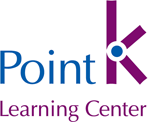Designing a Results Framework for Achieving Results: A How-To Guide
A results framework serves as a key tool in the development landscape, enabling practitioners to discuss and establish strategic development objectives and then link interventions to intermediate outcomes and results that directly relate to those objectives. This publication provides how-to guidance for developing results frameworks by discussing the following:
Login to review this resource
- The definition of a results framework. What is it? How does a results framework complement and differ from a traditional monitoring and evaluation logical framework?
- Uses for results frameworks. What are the functions of a results framework? At what levels can one be developed and used effectively?
- Requirements to design a results framework. Is there an assessment and diagnosis process to understand the problem and desired results before the design and implementation of the intervention is developed? Does the team adequately understand the problem that a development intervention is designed to address? Has the program or project logic been defined?
- Designing a results framework step by step. What are the steps in formulating a results framework? How should practitioners establish strategic objectives and articulate the expected results? What is the process through which results, indicators, and data sources can be assigned for each level of desired result (output, outcome, and impact)? What are the criteria for designing a useful results framework? Who should be involved in developing and using the framework?
- Challenges. What are the potential pitfalls in developing results frameworks? What strategies help in avoiding these?
| Bibliographic Details | |
|---|---|
| Author | Independent Evaluation Group (IEG) |
| Publisher | IEG--World Bank |
| Publication Date | September 1, 2012 |
| Publication City | Washington, DC |
| Publication Work | |
| Resource Type | |
| Resource Focus | |
| Audience | |
| Region | |
| Keywords | |
| Submitted to Point K | January 9, 2013 - 5:49pm |


